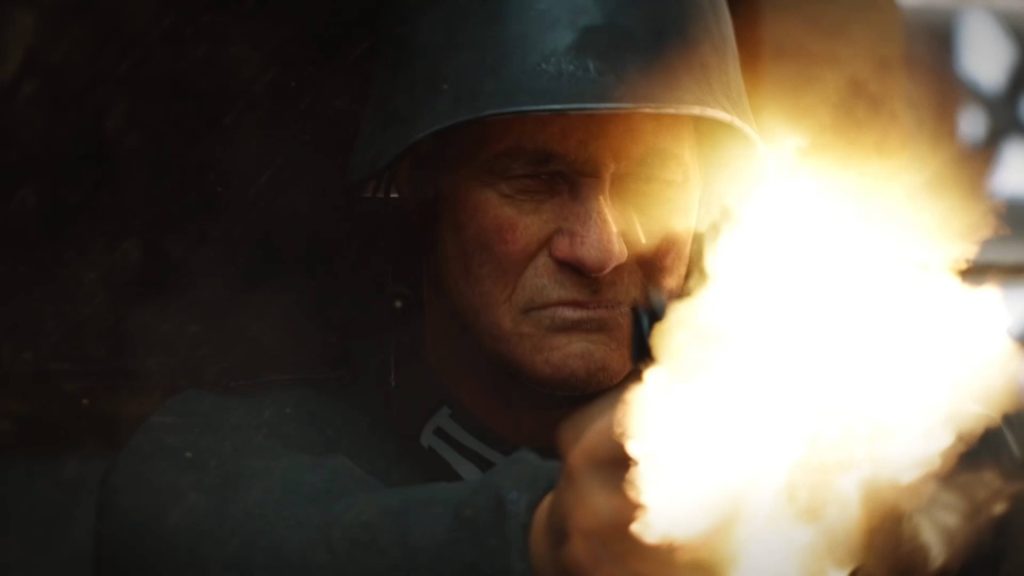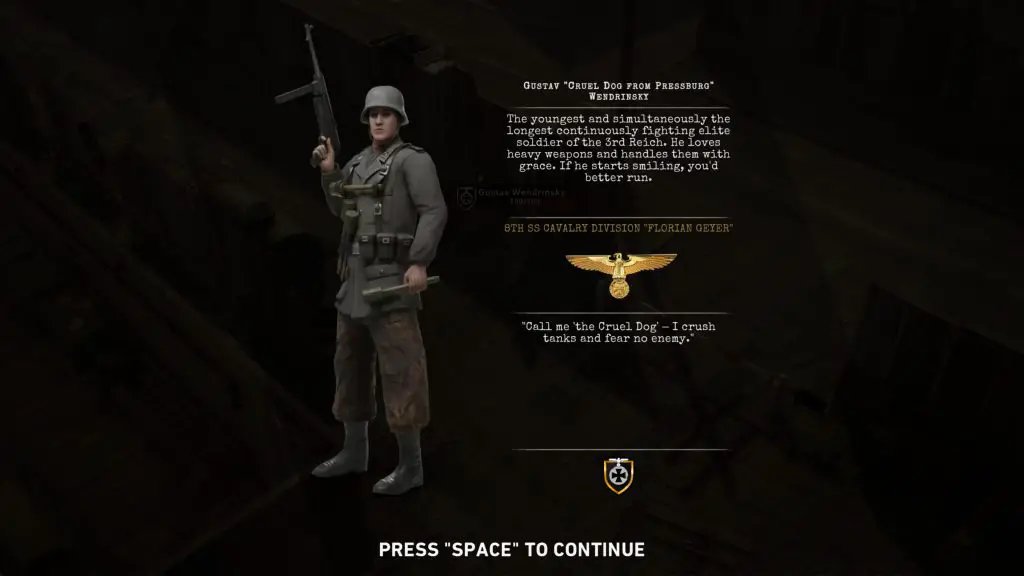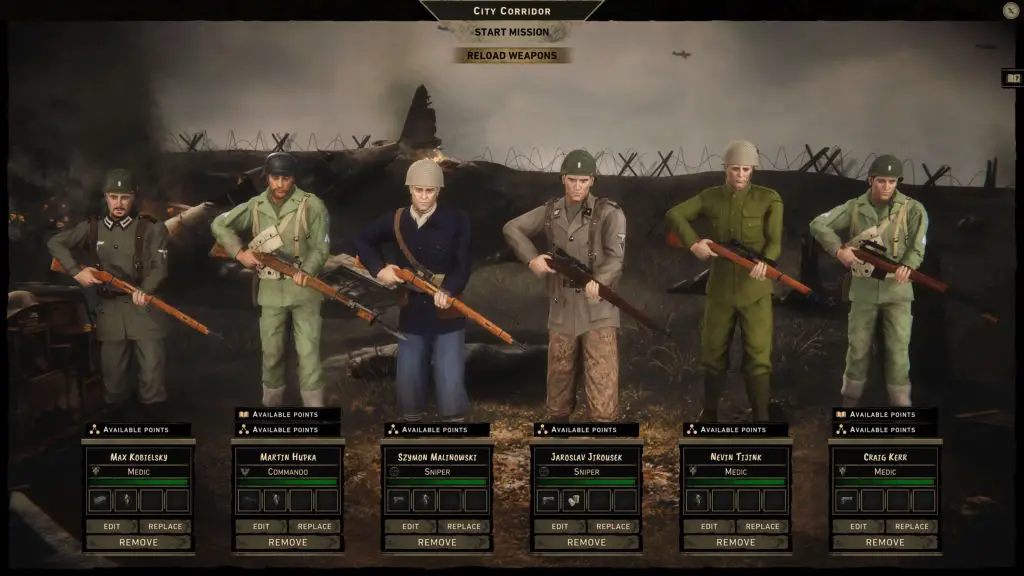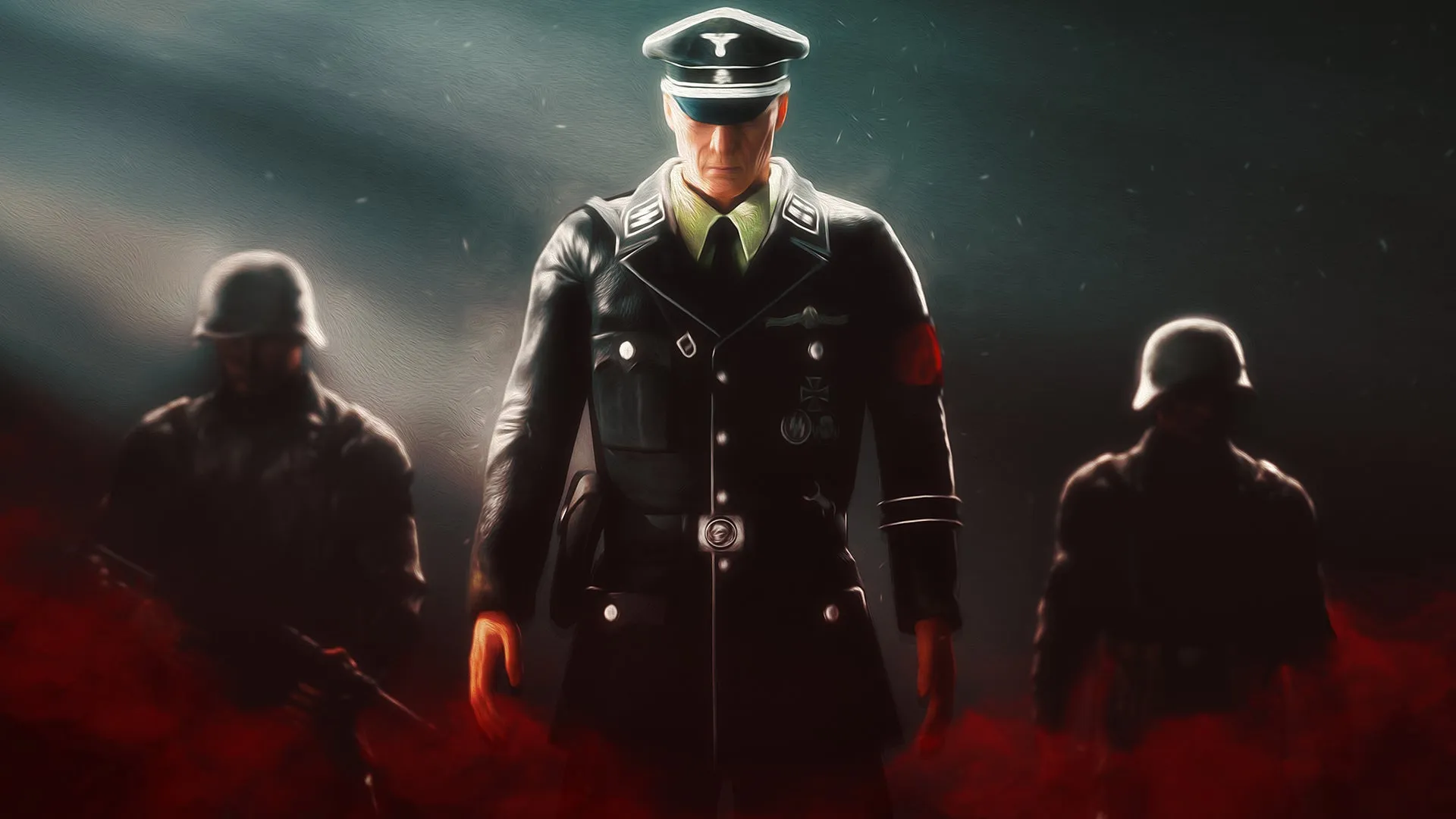“WW2” and “X-COM”. If you wanted to sell me on a game, I could scarcely think of a better combination of two words other than maybe “Mercenary” and “Manager.” I don’t know what it is, but I just love a good brother-in-arms tale about a group of ragtag soldiers finding comradeship across the crater scarred fields of war-torn Europe. Generating those small-scale stories where a lucky shot sends an enemy soldier tumbling just as he pulls the pin from his grenade or a tank round narrowly misses your squad, collapsing the wall you were hiding behind just a moment before.
Of course, whenever I load up a tactical game, it rarely leads to moments quite this dynamic, but my imagination can do some of the heavy lifting, and when I got my hands on a review copy of Forgotten But Unbroken, the first title from Slovakian studio Centurion Developments, I was excited to get stuck in and do my part for the war effort.
The Campaign
In a welcome change to the usual focus on the western or eastern front, Forgotten But Unbroken follows a squad of rebels hiding out in the Czechoslovakian woodlands. The war has started, and your American allies swiftly thrust our young protagonist into the command position through a startling disregard for the chain of command.
It’s clear the developer has a real passion for the tales of these brave guerrilla fighters, which are generally overlooked when we think back to conflicts of the Second World War, and your operations will take you on a tour of central Europe as you seek to hamper the Nazi war machine as well as following our protagonist’s personal war journey.

The overall narrative is a nice touch but a bit forgettable despite it coming with some fairly well-animated cutscenes. Maybe that’s a me thing, as I’m never looking for a complex narrative in a game like this. By this point, we all know who the good and bad guys are and why they are fighting.
They do make an effort to flesh out some of the main characters, but due to the length between story segments as well as a lack of real defining character features (especially when you start swapping armors around), I never felt particularly connected to the main cast. Instead, I developed more of a connection to my star sniper, who dropped more bodies than a Drowning Pool song, and was rather distraught when I couldn’t bring him on the final mission.
Hiding Amongst the Trees
To achieve your goals, you are going to need to focus on two different strategic levels. Commanding your troops in turn-based tactical battles similar to X-COM, and then managing your base similar to well…. X-COM? Ok, not exactly, the base management aspect feels like more of a light survival mode compared to the ramping up of capabilities in X-COM but that makes sense for the title. You are rebels hiding out in the forests, you don’t get to build giant underground bases or in depth research facilities. Instead, your priorities lie with stealing enough supplies to build some rough barracks or scavenging enough food and wood for the winter.
The idea of building up your hidden camp upon the trees, out of view from your oppressors, as you recruit and train your troops is an enticing one. Sadly I felt a lot of questionable design choices bogged down the experience. The main way to get resources is to continuously radio the superpowers and hope they deem your cause worthy enough to offer you some crumbs of food and medicine.
The problem with this is that there is no real interactivity and only minor decisions to make. You have to keep harassing them for supplies every time the request is off, call down to feed your troops, and then view a short scene if they do send you supplies. After a while, I began to feel like a needy ex begging for a second chance, and it’s not really optional, as your food is constantly ticking down.

You can also send out expeditions to hunt food and gather firewood for the upcoming winter; this works a bit better because it asks you to balance which resource you more urgently need while asking you to commit a soldier to do the job for a short time which adds a layer of strategic choice. Although, given how quick the expeditions are and the fact you can stall on missions a bit, you are never really at risk of having an expedition lock out a vital soldier.
The final element will be a hospital to treat your troop’s injuries; however, I never found medicine to be lacking, and the injuries heal quickly enough that I never had to swap my experienced soldiers out for some fresh-faced rookies on any given mission. There are infections that can spread around the camp during winter, which have a more lingering effect by sending a steady stream of soldiers to the infirmary, but there are no missions in the winter to go on, so it just ends up feeling like more busy work.
By the end of the first winter I had got my relationship with my allies high enough that supplies were never a concern again as long as I kept calling them over and over. Ultimately the base building/camp management aspect is just there, it’s nice to have a shooting range where you can use excess ammo to train troops but beyond that it’s just something extra to manage that never really gripped me. It’s a good idea, but I wish I was more excited to build my base out like I was with new room developments in something like X-COM.
Guerrilla Warfare
I can deal with the base building being a bit uninspired as long as the combat is great… so is it? Well, I think great might be a stretch, but it’s certainly not bad. It’s a fairly standard tactical affair, grab your squad of up to 6 soldiers, move through the map utilizing partial and full cover, manage your AP effectively to flank enemies, and get yourself out of danger.
It’s going to feel instantly familiar to those who have played any similar AP-based tactical title before, and it does allow AP to be used in any order so you can turn a corner to get a shot off and immediately run back, helpfully in overcoming difficult situations of being outnumbered and outgunned, especially on the early missions.

Most battles are also preceded by a stealth section where you can try and sneakily take out enemies to thin the ranks before the battle begins properly. It works fine but lacks any real way to distract enemies or manipulate them so you just have to follow enemies and hope they don’t turn around or sit still for 10 turns and learn their patrol route. I do like having the ability to try and move my troops into strategically advantageous positions before a fight begins, but due to the enemy getting a full turn when you are discovered, you are disincentivized to take many risks.
The biggest problem I have is the lack of real weapon variety. There is actually a small arsenal of weapons that appear in the game, but almost all are functionally identical aside from the type of ammo they use. SMGs do about the same damage as rifles, which doesn’t depend on the range, so I never saw any reason to run anything but scoped rifles. Heavy weapons do significantly more damage but require a soldier specifically trained in their use to be remotely effective, so aside from fixing a scope, you will not find your equipment changing much over the course of the game.
The same is true of enemies, Forgotten but Unbroken features a large number of historical units to fight against however all behave in similar ways with similar weapons. Some might be immune from the game’s panic system, and especially formidable foes might impose an aim debuff on your squad, but I never really felt the need to change my approach for different enemy types.
The exception to this is enemy “hero” units that occasionally appear on missions and act similar to X-COM 2’s Chosen, posing a particularly formidable threat to your team. I did enjoy the “oh shit” feeling of a big bad showing up and focusing them down, and I even ended up looking up the soldiers to read a bit more about their real-life counterparts. Maybe I’m stereotyping, but I always feel wargame fans like a historical deepcut (and hate historical inaccuracies in equal measure), and I’m no different!

On a more positive note I was however happy to see a decent amount of map variety, none of them are huge but they are drip fed enough throughout the game that you are constantly supplied with new maps in a variety of locales and never have to play the same map more than 2 or 3 times. There is some mission variety to go alongside it, and attacking to take territory on one map will often lead to you being behind those defenses further down the line. I love a good defense mission, although beyond the occasional mounted machine gun which sprays an area or the ability to place mines with a sapper, they don’t differ greatly in mechanics.
The Squad
Your weapons might not change, but your squad certainly will, from a newly trained recruit popping off a single shot a turn to an expert marksman who can fire off a full clip and still squeeze in the reload. Progression comes in two forms via levels with perks and a weapon “familiarity” system. There are some interesting activatable perks alongside the more standard passive ones, and the fact you can just keep leveling characters to add perks on top of perks really allows you to create some deadly units.

Generally, I think these systems work well. Despite the classes not being super balanced (If I ran the campaign again, I would just go with six snipers), there is a good sense of progression and flavor. Some perks are shared across classes but they do still feel like they have distinct specialties, I just wish I had more reasons to draft in different classes. There is some attempt to experiment with some class-based systems like the aforementioned sapper allowing you to set mines down prior to a defense mission, but none are hefty enough that you would miss being without them.
Final Thoughts
After a 20-hour-long campaign that ended in a bit of a whimper, I sadly can’t recommend Forgotten But Unbroken at its full price. There is a lot of passion here and a solid foundation for a game, but unless you have a specific cultural tie to the area, there isn’t really a “hook” to sink your teeth into. Plenty of systems are added, but most feel a little undercooked, leaving me to categorize this as a modern “Eurojank” title. It will certainly have its defenders, but for everyone else, I would advise you to do some research to be sure this is something you are going to enjoy.
The developers have recently delivered their first big patch for the game, adding a new difficulty level and game mode, so I do think in time, it will become an easier recommendation, but for right now, I would wait for a sale unless you are fine with the concerns mentioned above.
A key for this title was provided by the developer/publisher.







